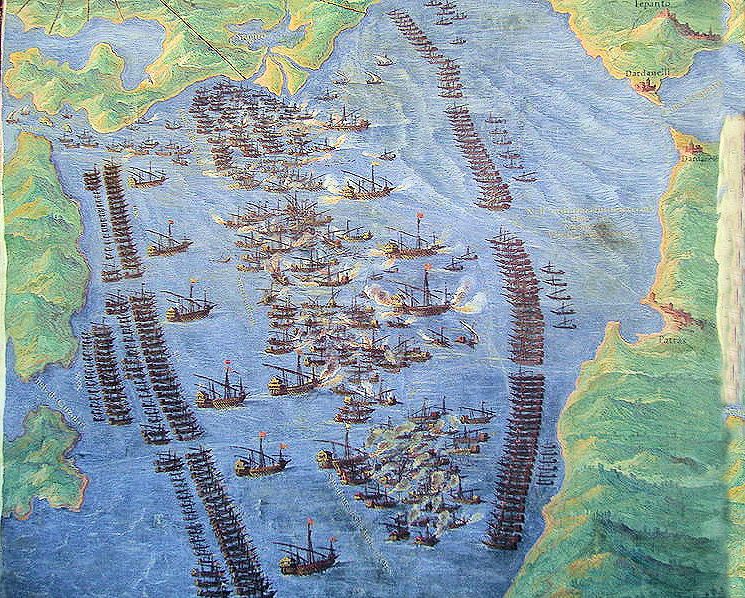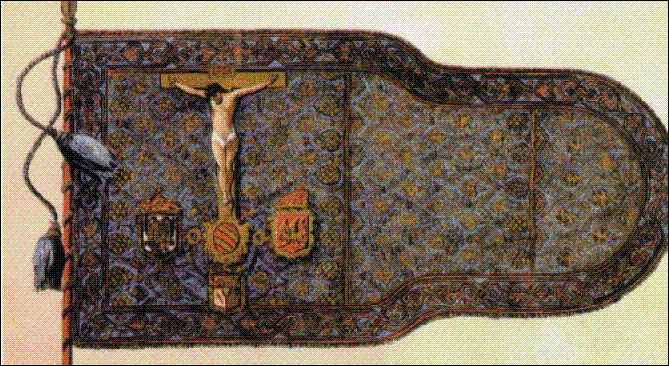At daybreak on the 7th of October, 1571, D. John of Austria ordered the fleet to leave the port of Petala, and very carefully to go along the channel between the coast of Greece and Oxia, the last island of the Curzolari; in the latitude of Cape Scropha the watch on the “Real” made signals that two sails were in sight. Then the curious at once covered masts and yards, but it was not two sails that they saw; there were dozens and dozens which stood out against the blue of the sky and the blue of the sea, skimming the waves like a flock of white sea-gulls. There was no doubt; the enemy was in sight; the belligerents had met face to face turning the same corner. It was then seven o’clock in the morning.

The start of the Battle of Lepanto
D. John of Austria at once ordered his pilot, Cecco Pizano, to disembark on one of the high islets, to observe the strength of the enemy. From this height could be seen all the wide bay, and in it Pizano spied the Turkish fleet advancing, about twice as numerous as had been supposed, favored by the breeze, which was hindering and embarrassing the maneuvers of the Christians. The pilot was horrified at what he saw, and back on the “Real” he did not dare say what he had seen at such a critical moment and contented himself with whispering in the Generalissimo’s ear, “Put out your claws, my lord, for the job will be a tough one.”
On hearing this D. John made no sign, and as at that moment several of his Captains came to ask him whether he would not hold a last Council, he answered blandly, “There is no time for anything but fighting.”
Banner of the Holy League used in the Battle of Lepanto
And he at once ordered a small cannon on the “Real” to be fired, and a white flag to be run up in the centre of the galley, which was, ever since Messina, the signal for battle.
Rev. Fr. Luis Coloma, The Story of Don John of Austria, trans. Lady Moreton, (New York: John Lane Company, 1912), p. 260.
Short Stories on Honor, Chivalry, and the World of Nobility—no. 12









